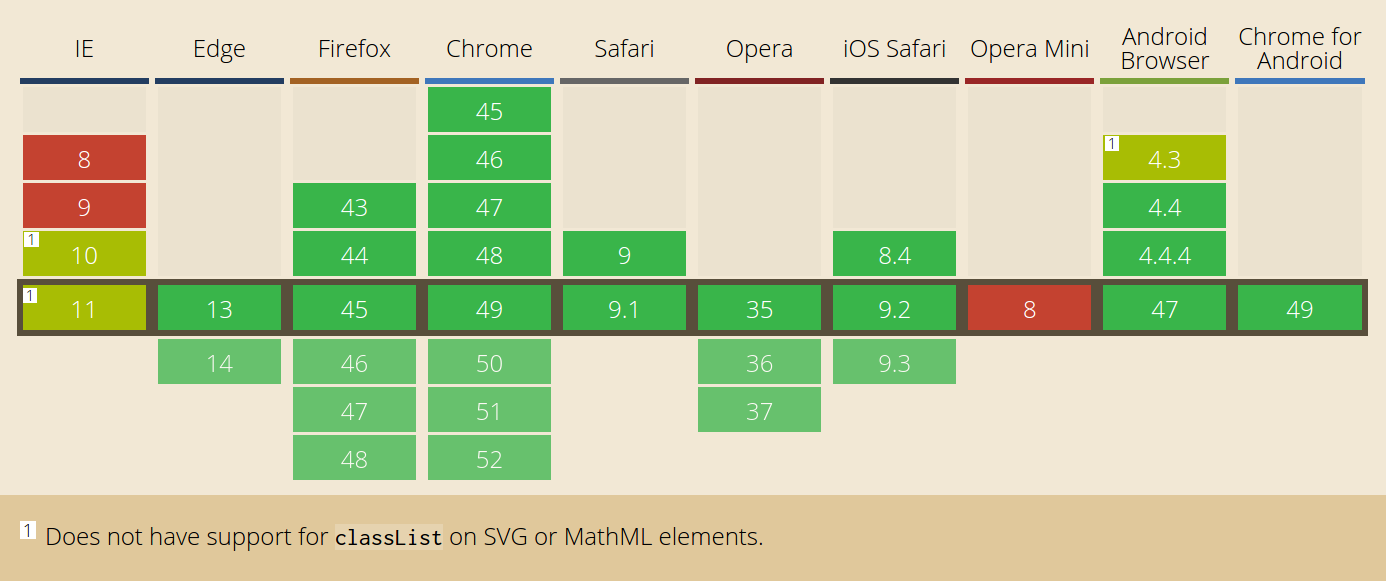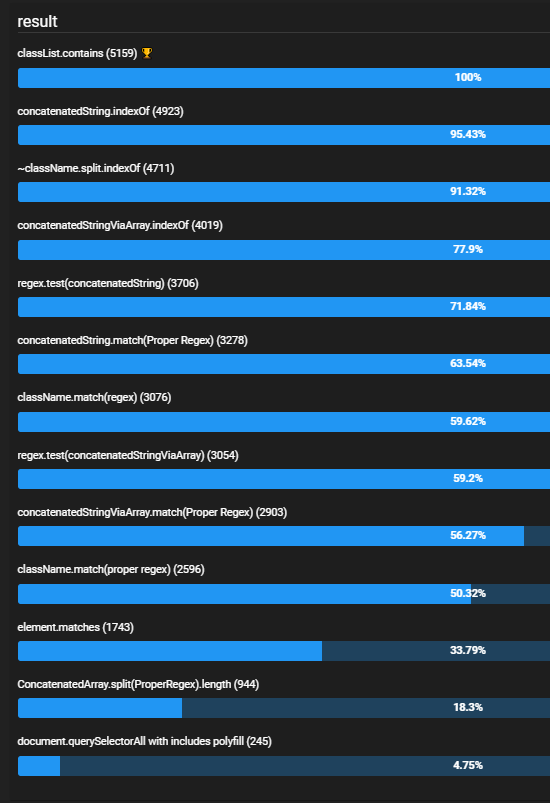Using plain JavaScript (not jQuery), Is there any way to check if an element contains a class?
Currently, I'm doing this:
var test = document.getElementById("test");
var testClass = test.className;
switch (testClass) {
case "class1":
test.innerHTML = "I have class1";
break;
case "class2":
test.innerHTML = "I have class2";
break;
case "class3":
test.innerHTML = "I have class3";
break;
case "class4":
test.innerHTML = "I have class4";
break;
default:
test.innerHTML = "";
}<div id="test" class="class1"></div>The issue is that if I change the HTML to this...
<div id="test" class="class1 class5"></div>
...there's no longer an exact match, so I get the default output of nothing (""). But I still want the output to be I have class1 because the <div> still contains the .class1 class.



